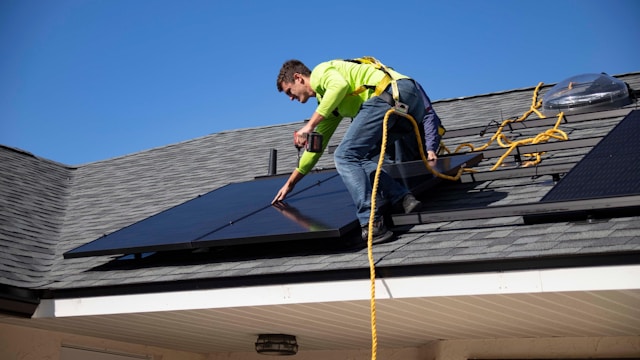The rapid expansion of new housing developments across Simcoe County, particularly in Barrie, presents a critical juncture. As demand for homes surges, a pressing question emerges: are these new communities being constructed with long-term energy sustainability in mind, or are we simply building tomorrow’s energy challenges today? The sun is out, offering a powerful, renewable resource, yet its integration into Barrie’s local housing development landscape remains a topic ripe for investigation. This analysis delves into the complexities, opportunities, and policy considerations surrounding the adoption of solar power for new builds in the region, framed against the backdrop of Ontario Green Energy ambitions.
Canada is on an ambitious path to construct millions of new homes, a necessary step to address housing shortages. However, this construction boom largely overlooks a significant opportunity: embedding solar technology from the outset. Experts like Katherine Zhou of PV Technical Services highlight a stark reality: Canada’s domestic solar panel manufacturing capacity is underdeveloped, with a heavy reliance on Asian markets. This isn’t for lack of potential demand. The sheer volume of new construction, evident in Barrie and across Simcoe County, could theoretically fuel a robust domestic solar industry, if only the right conditions and policies were in place. The sentiment, as voiced by Andreas Athienitis from Concordia University, is that if we are building en masse, we should “do it right the first time” by making these homes energy-efficient with solar panels.
Internationally, the tide is turning. The United Kingdom is reportedly on the verge of mandating solar panel installations on nearly all new homes in England by 2027, a decisive move towards decarbonizing its grid and enhancing energy security. Closer to home, California has required solar setups on new homes since 2020. While this added approximately $13,125 USD (roughly $17,800 CAD) to the initial price of a home, it translated to a manageable increase of about $55 USD (around $75 CAD) in monthly mortgage payments. John Gamble of Modular Energy Solution in Niagara Falls, Ontario, underscores the financial logic: incorporating the cost of a solar system, which might be around $25,000 for a 7.5-kilowatt setup in Ontario, into a 25-year mortgage is far more palatable than financing it through a short-term loan with potentially hefty monthly payments exceeding $400.
For Barrie solar homes and Simcoe County new builds, the implications are significant. While no specific widespread municipal solar policy mandating such installations currently drives development in the area, the potential benefits align squarely with broader Ontario Green Energy objectives. Research from the University of Guelph suggests that rooftop solar is an ideal climate adaptation measure, capable of meeting the increased energy demand from air conditioning during ever-hotter summers. The sun is out, and harnessing its energy directly on new homes in Barrie could alleviate strain on the provincial grid, especially in a high-demand region like southern Ontario. If homes generate a portion of their own electricity, more power remains available for industrial and commercial needs, a quicker solution than the lengthy process of developing new large-scale power generation facilities.
The primary hurdle appears to be the upfront cost and the absence of decisive municipal solar policy in areas like Simcoe County to standardize solar integration. Yet, the argument that solar and battery solutions are available “today,” as Gamble points out, challenges any inertia. Delaying integration means new housing developments in Barrie might miss a crucial opportunity to enhance property values, build energy resilience, and contribute meaningfully to Ontario’s green targets. The alternative is to continue constructing homes that will require retrofitting later at potentially greater expense and inconvenience.
The conversation around Barrie solar homes and progressive local housing development in Simcoe County needs to move beyond theoretical benefits to concrete action. While provincial and federal strategies evolve, municipalities are not powerless. They can explore zoning incentives, streamlined permitting processes, or even advocate for regional standards. The question for Barrie and Simcoe County isn’t just about building more homes, but about building them smarter. The sun is out, representing a consistent, clean energy source. It’s time for local leadership to seriously investigate and champion policies that ensure new communities are powered for a sustainable future. The window of opportunity presented by the current construction boom will not last forever.

